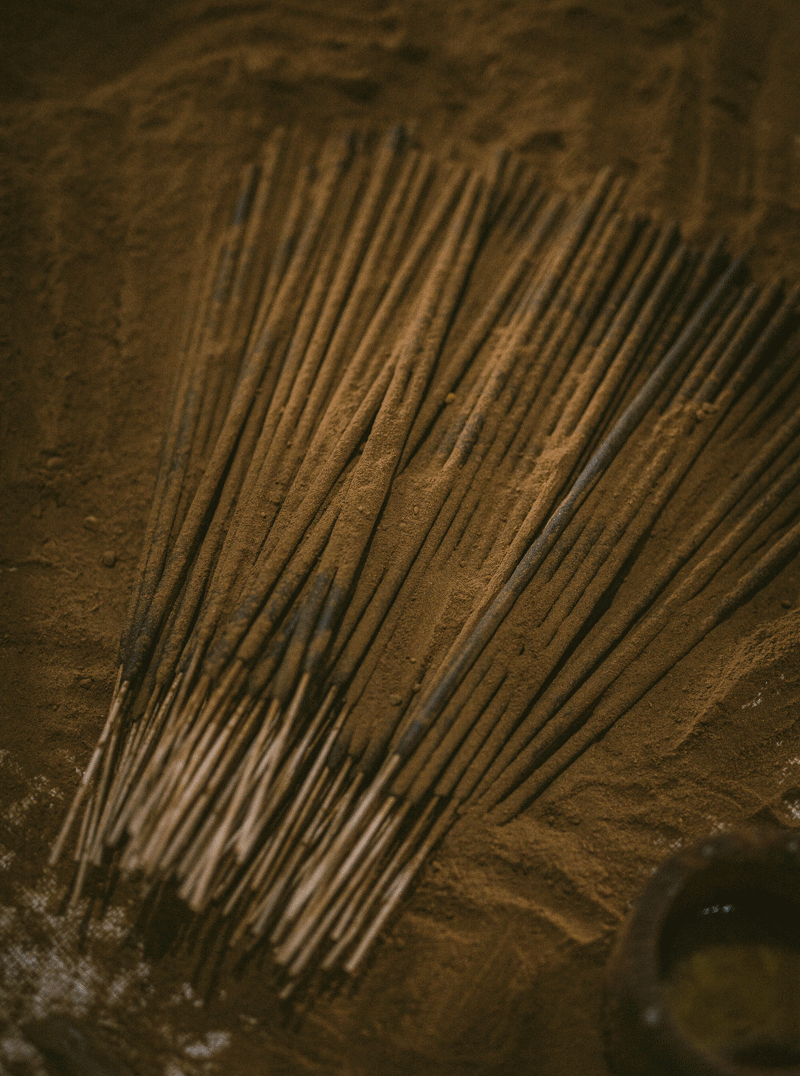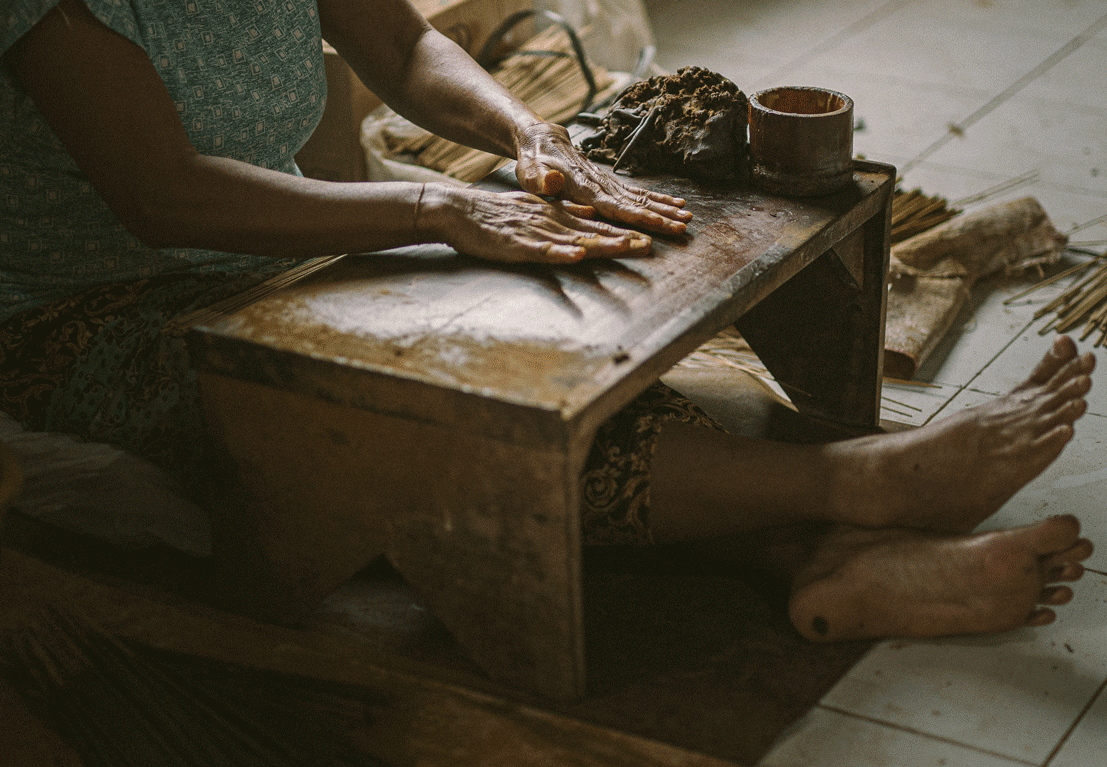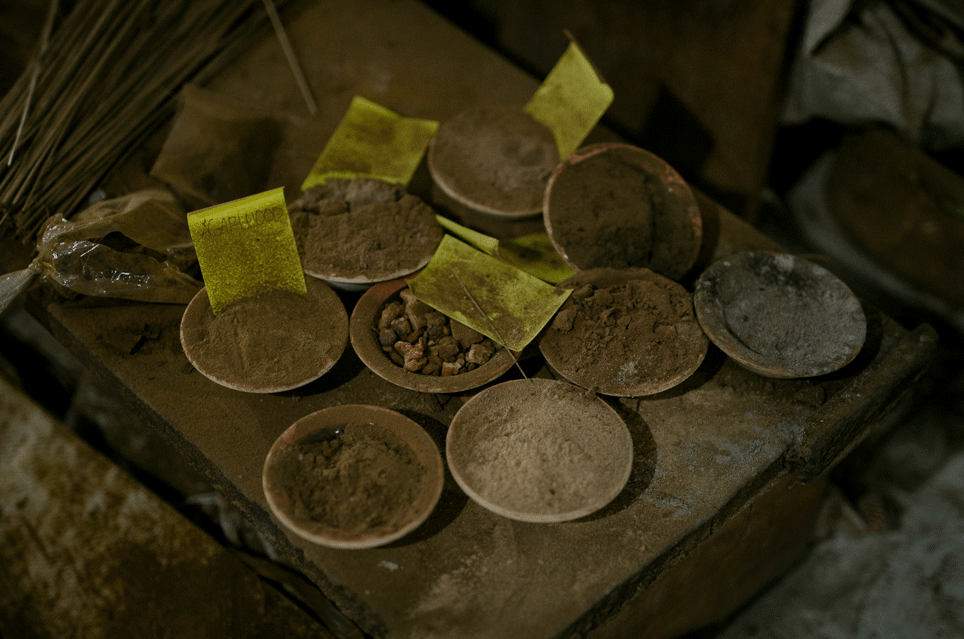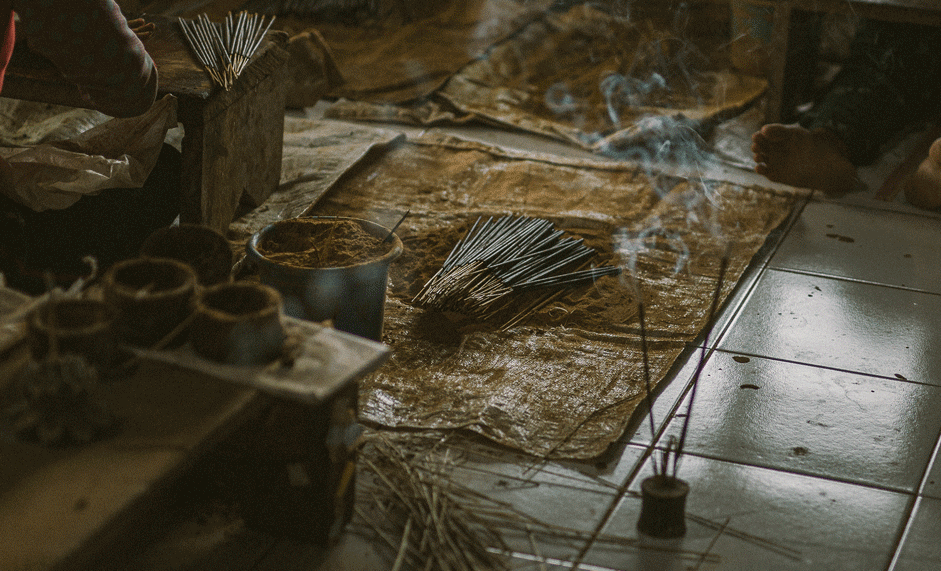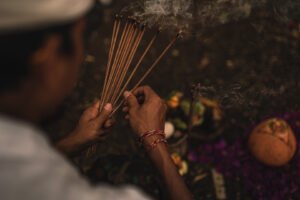Between Gianyar and Sidemen, we ventured into the realm of incense masters. A couple of years ago, they introduced some machines to streamline the process. They guided us through the rudimentary machines they acquired and how they functioned, yet the process remained remarkably primitive and manual. Finally, we ascended to the upper part of the workshop, where a handful of talented women crafted the sacred incense used in temples and ceremonies.
This elevated space was chosen intentionally—to be closer to the gods and distanced from the underworld, where demons and negative energies dwell. Ascending the tiny staircase, we had to stoop to avoid hitting our heads. It seemed like we were entering a storage loft, but instead, we found ourselves in a room with a stronger aroma, dimmer light, and less metallic sounds. Smoke from burning incense wafted through the air, adding an extra layer of magic to that workshop.
In this sacred space, the atmosphere was imbued with a sense of reverence and ancient wisdom. As we observed, the women were seated gracefully on the floor, each one presiding over a small wooden table adorned with an array of powders in vivid hues, essential oils with fragrances that seemed to transcend the earthly realm, and carefully selected aromatic woods. The room was enveloped in the heady perfume of the incense-making process, creating an ambiance that felt both mystical and serene.
The hands of these skilled artisans, stained with the earthy tones of their craft, moved with a rhythmic precision that spoke of years of practice and a deep connection to the spiritual significance of their work. The powders of various colors were blended with the oils, and the aromatic woods were carefully integrated into the mixture. Each movement seemed orchestrated, a dance of creation that brought forth a small, magical paste—one stick at a time.
The alchemical process unfolded as if time itself had slowed down, allowing us to witness the transformation of raw ingredients into something sacred and ethereal. The women worked in unison, their collective energy contributing to the creation of incense intended for the highest purposes—temple rituals and ceremonies.
The deliberate choice to conduct this meticulous work on the upper level resonated with a profound symbolism. It was a physical and metaphysical elevation, placing the craftswomen nearer to the gods and distanced from the underworld—a realm associated with demons and negative energies. This intentional separation emphasized the purity and sanctity of the incense being crafted, reinforcing the belief that these specific hands were entrusted with a divine responsibility, ensuring that the essence of their creations would carry blessings and positive energies to those who would eventually encounter their aromatic wonders.
